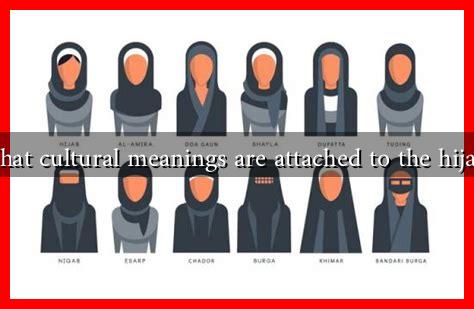-
Table of Contents
What Cultural Meanings Are Attached to the Hijab?
The hijab, a traditional headscarf worn by many Muslim women, is often a subject of debate and discussion in various cultural contexts. While it is primarily a religious symbol, the hijab carries a multitude of meanings that vary across different cultures and communities. This article explores the cultural significance of the hijab, its implications in society, and the diverse perspectives surrounding its use.
The Hijab as a Symbol of Faith
For many Muslim women, the hijab is a profound expression of their faith and commitment to Islamic principles. The Quran instructs women to dress modestly, and the hijab serves as a physical manifestation of this directive. The cultural meanings attached to the hijab in this context include:
- Spiritual Identity: Wearing the hijab can signify a woman’s dedication to her faith and her desire to embody Islamic values.
- Community Belonging: The hijab can foster a sense of belonging within the Muslim community, reinforcing shared beliefs and practices.
- Empowerment: For some women, the hijab represents empowerment and autonomy, allowing them to define their identity on their own terms.
Historical Context and Evolution
The hijab has a rich historical background that predates Islam. In various cultures, head coverings have been used for centuries as symbols of modesty, social status, and protection. Over time, the hijab has evolved, influenced by factors such as:
- Colonialism: In many regions, colonial powers imposed Western ideals of dress, leading to a complex relationship with traditional attire.
- Feminism: The feminist movement has also impacted perceptions of the hijab, with some viewing it as a tool of oppression while others see it as a form of liberation.
- Globalization: The spread of media and technology has led to a more diverse representation of the hijab, challenging stereotypes and promoting understanding.
Contemporary Perspectives: The Hijab in Society
In today’s world, the hijab is often at the center of discussions about women’s rights, cultural identity, and religious freedom. Different societies interpret the hijab in various ways, leading to contrasting views:
- Western Societies: In many Western countries, the hijab is sometimes viewed with suspicion, often associated with stereotypes of oppression. However, there is a growing movement advocating for the rights of women to choose to wear the hijab freely.
- Muslim-majority Countries: In some Muslim-majority nations, the hijab is mandated by law, while in others, it is a personal choice. This dichotomy raises questions about autonomy and cultural expression.
- Intersectionality: The experiences of hijab-wearing women can vary significantly based on race, ethnicity, and socio-economic status, highlighting the importance of an intersectional approach to understanding their experiences.
Case Studies: The Hijab in Action
Several case studies illustrate the diverse meanings and implications of the hijab in contemporary society:
- France: The 2004 law banning religious symbols in public schools sparked significant debate about secularism and religious freedom. Many Muslim women felt marginalized, while others argued for the importance of secular values.
- United States: The rise of Islamophobia post-9/11 led to increased discrimination against hijab-wearing women. However, initiatives like the #HijabChallenge on social media have sought to promote understanding and solidarity.
- Turkey: The ban on hijabs in public institutions until 2013 highlighted the tension between secularism and religious expression, leading to a broader discussion about women’s rights and personal choice.
Conclusion: Embracing Diversity in Cultural Meanings
The hijab is a multifaceted symbol that embodies a range of cultural meanings, from religious devotion to personal empowerment. Understanding these diverse perspectives is crucial in fostering dialogue and promoting respect for individual choices. As societies continue to grapple with issues of identity, freedom, and expression, the hijab remains a powerful emblem of the complexities surrounding cultural and religious practices. By embracing this diversity, we can work towards a more inclusive world that honors the choices of all women, regardless of their attire.
For further reading on the cultural significance of the hijab, you can explore resources from organizations like The Hijab Project, which aims to promote understanding and awareness of hijab-wearing women’s experiences.


